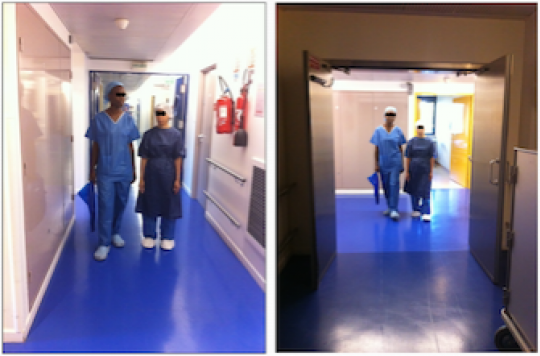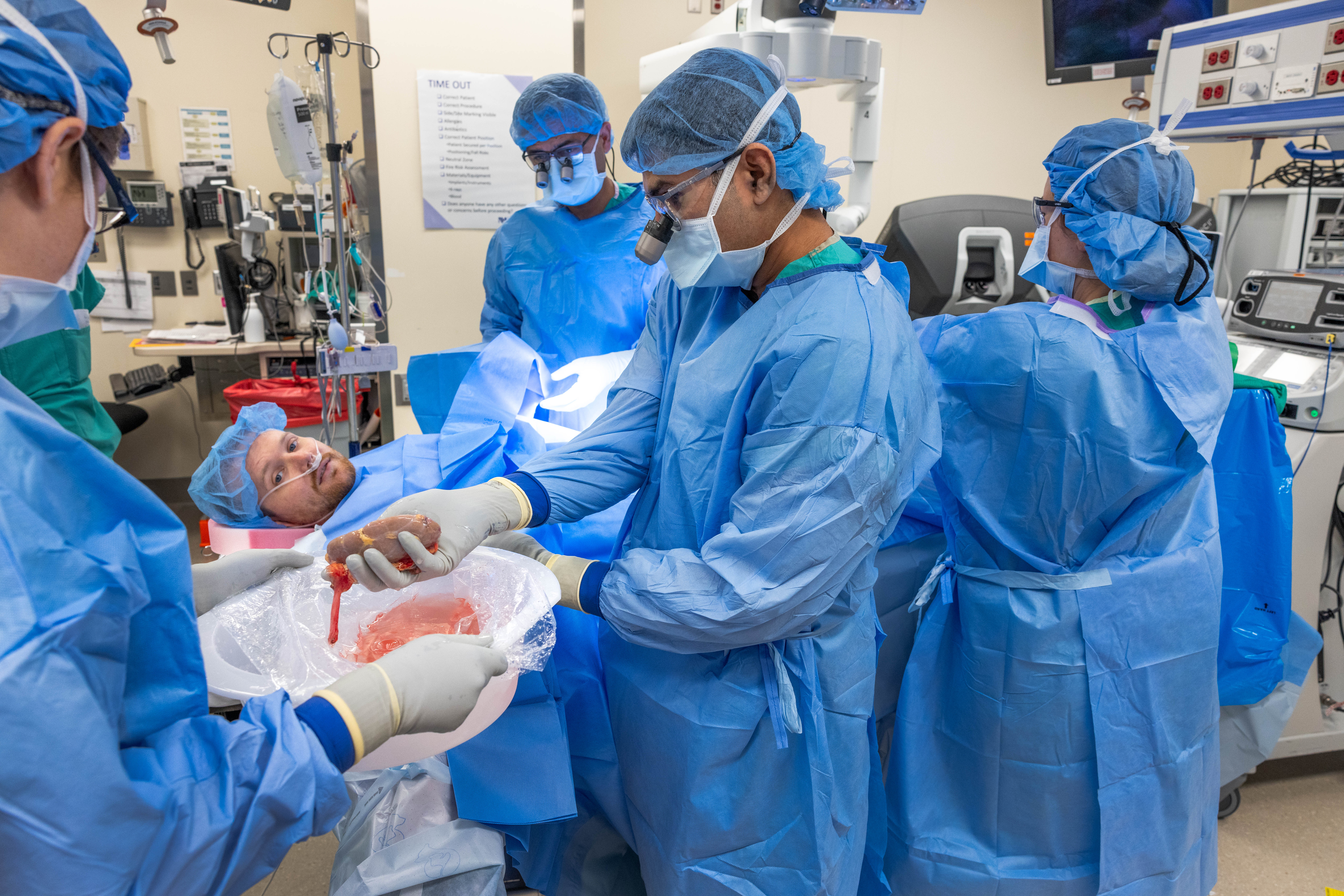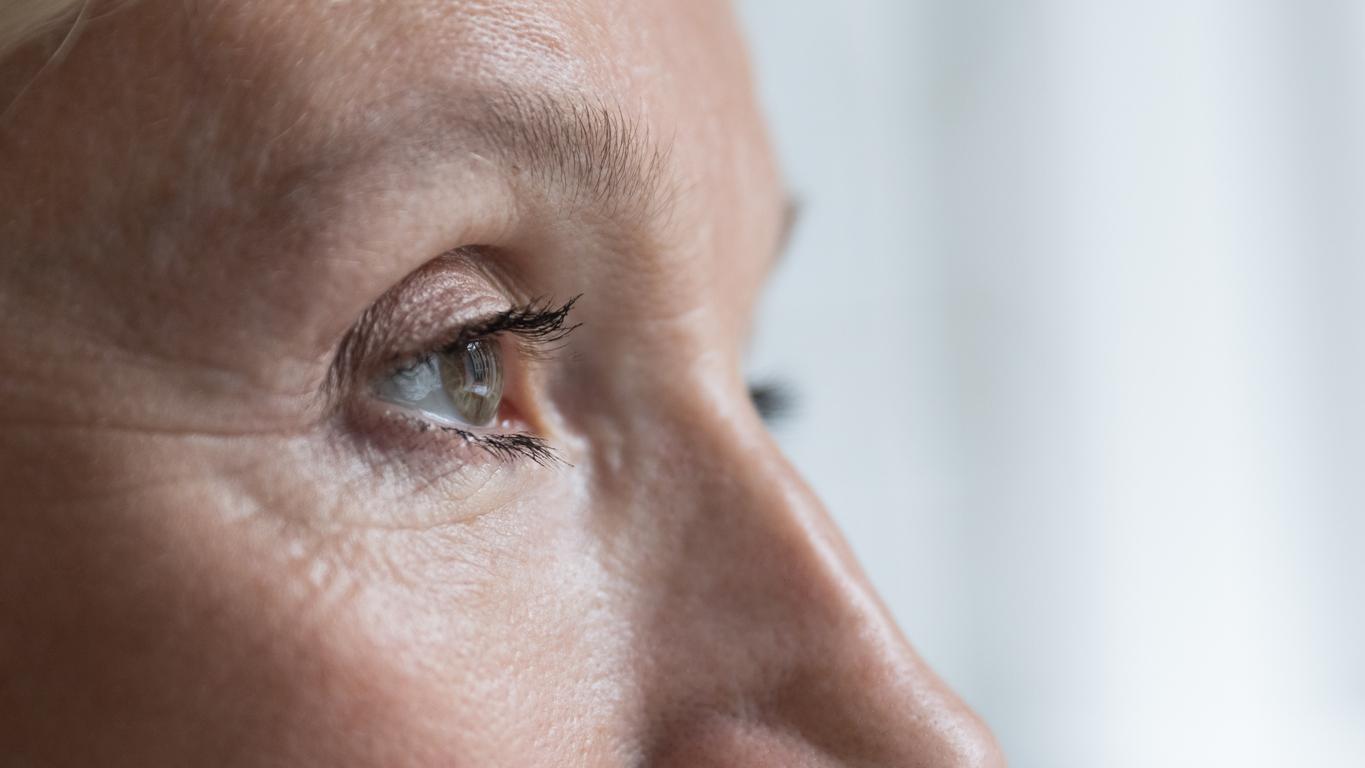Walking patients to the operating table is a rare practice. However, it improves the quality of care and reduces constraints for caregivers.

Go to the operating room on both legs, wait for the operation by leafing through a magazine or listening to music. The image may make you smile, but that’s what the Institut Mutualiste Montsouris in Paris is trying to do. The “patient standing” is the most advanced aspect of outpatient surgery, which aims to shorten hospital stays as much as possible. IMM has been experimenting with it since October 2014.
A well-honed technique
“Before, the patient arrived in his room, he was undressed and put in condition. He was put on a stretcher and this stretcher was transported over the 15 meters that separate the outpatient structure from the operating theater. Often the patient would wait in the hallway, which is a passing place, for the room to be ready. He entered the operating room, still on his stretcher and transferred horizontally to the operating table ”, says the Dr Olivier Untereiner, anesthesiologist at the Institut Mutualiste Montsouris. The patient in question is, however, able to walk in most cases. So why not let him walk?
Faced with this observation, Dr Untereiner wanted to develop the technique of the patient standing. He was inspired by structures that already use it, in particular the Léon-Bérard Cancer Center in Lyon, but also the digestive surgery department of the Herriot hospital, still in Lyon, and the Paoli-Calmette cancer center in Marseille. It took 7 months of meetings and work for the pilot experience to start. Since October 6, the launch date, the technique has been well established.
Listen to Guylaine Rossel, health manager at the Institut Montsouris: “ The nurse explains to the patient the modalities of his transfer. Technical assistance accompanies the patient to the operating room. The patient settles himself on the operating table. “
Less stressed patients
The clothing of the patients was reworked according to the requirements of the experiment. It includes a charlotte, a shirt and overshoes, as for a patient transported on a stretcher. “For the decency of the patient, we added pants, and for hygiene, slippers,” says Guylaine Rossel.
A waiting room was also built near the outpatient unit. In addition to chairs, music and magazines are offered to patients. The door is glazed, so patients can observe the activity in the OR. The objective is twofold: to play down the operation as much as possible, and to ensure the safety of the patient by keeping an eye on him. More than 500 patients have been operated on according to this protocol, mainly in ophthalmology – the operation takes place in a chair – and in endoscopy – the patient is then operated on on his stretcher. After three months of experience, the results are rather good, for both patients and the healthcare team.
Listen to Dr Olivier Untereiner, Anesthesiologist Resuscitator : ” There is a decrease in stress. It also pushes us to improve our practices, because of the very different relationship we have. “
Each patient who went to the OR on their feet filled out a questionnaire after the operation. 98% said they were satisfied with the method of transfer and as much with respect for their privacy. And not a single one has, for the moment, refused to bow to the game.
Some reluctance of caregivers
Despite all the positive arguments, on the side of caregivers, the “patient standing” method can block. This is particularly the case with anesthetists, recognizes Olivier Untereiner. They usually administer a light sedative (anxiolytic, hypnotic or benzodiazepine) before the operation, in order to reduce stress. The fact that the patient walks to the OR calls into question this common practice … although it has not been proven.
Listen to Dr Olivier Untereiner, Anesthesiologist Resuscitator : ” The benefit of premedication has never been demonstrated. Lowering the patient to an upright position has a significant anxiolytic effect. “
Convincing is therefore difficult, but once implemented, the “standing patient” experience ended up being unanimous in the outpatient unit, including among surgeons. “In this waiting room, I saw surgeons who were seated next to the patient. It’s the little things that create a bond that didn’t exist before, says Dr Oliver Untereiner. A patient lying down means an operation on a liver. So, I have to make an effort to say hello to him. Whereas if he is standing, it is more natural. ”
The cost of the patient standing is relatively modest for the structure: it took 8,000 euros of work to notably develop the waiting room, and the project costs only one euro per patient in consumables.
.















